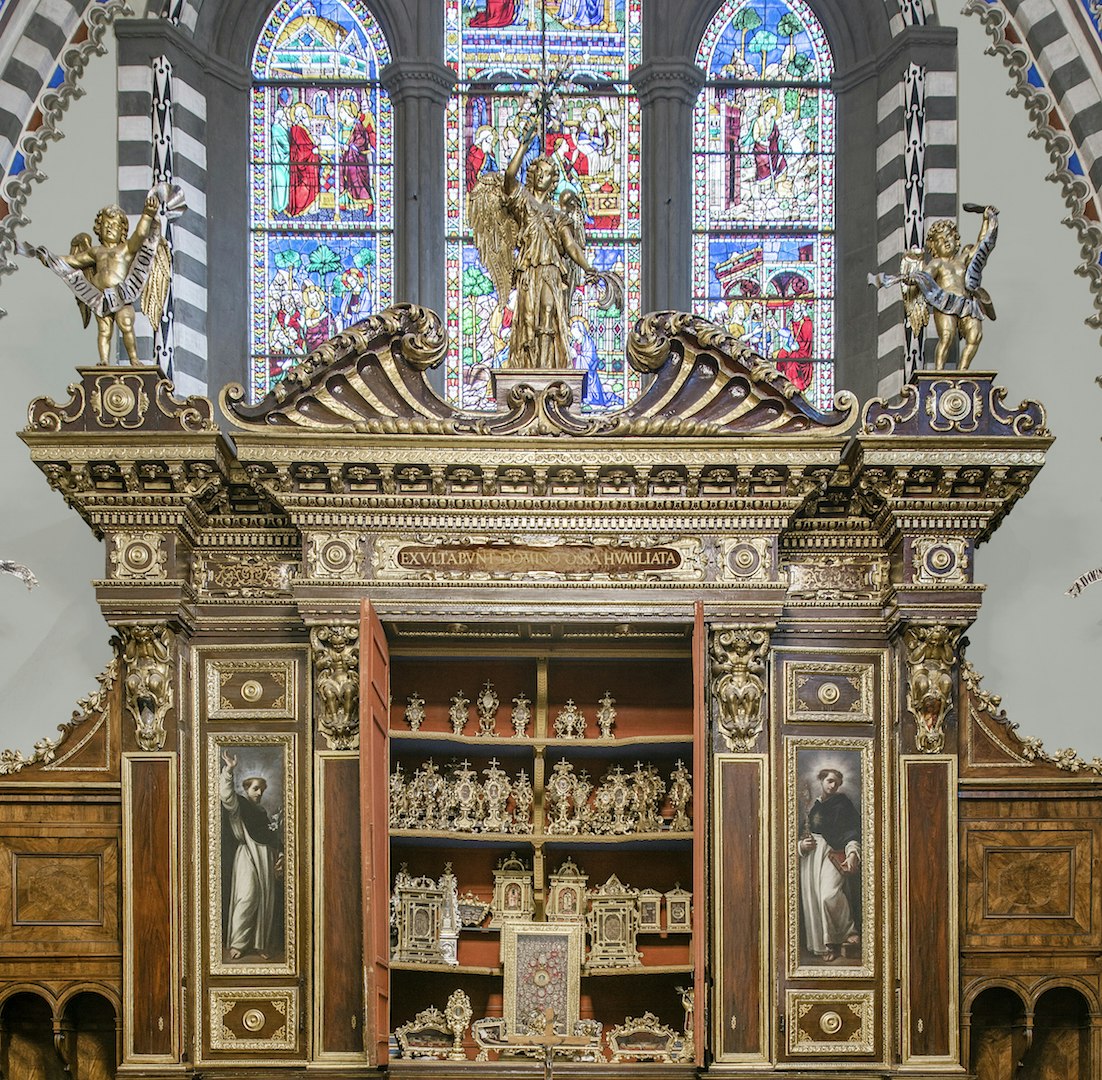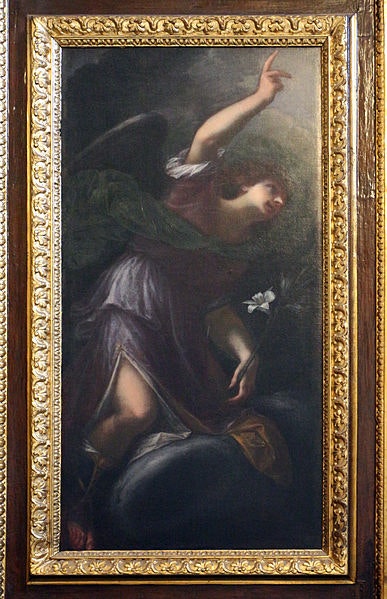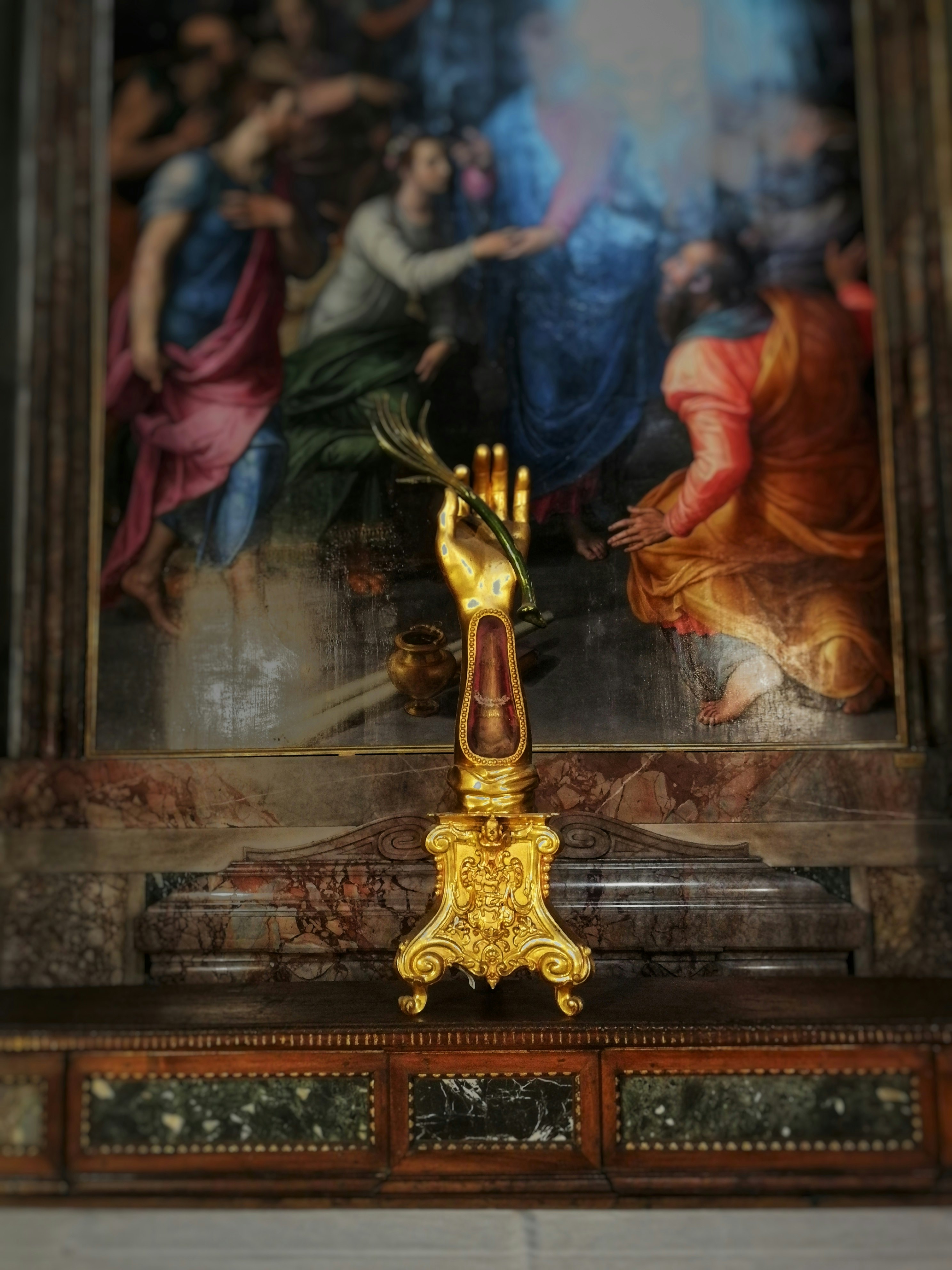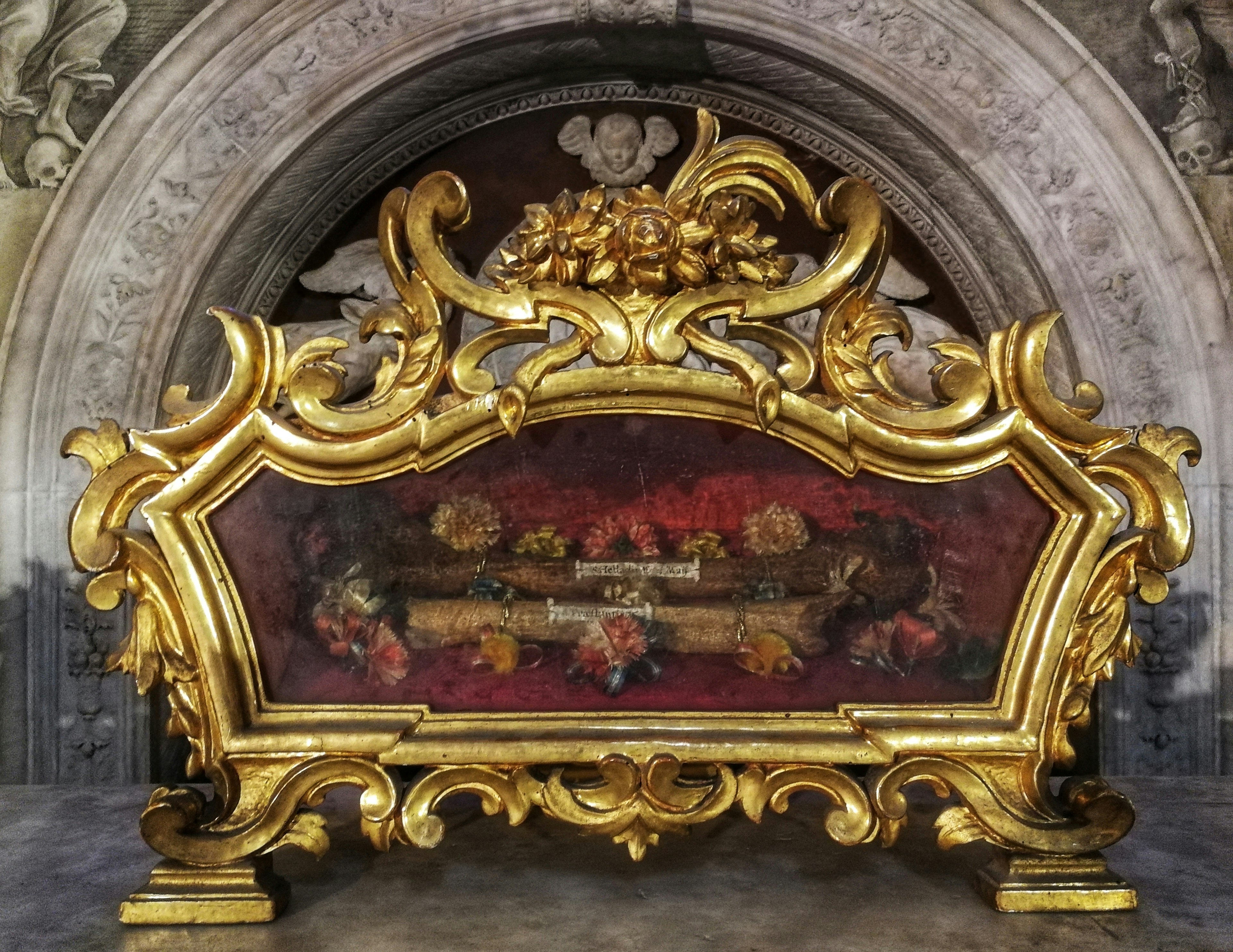
by Marco Turini
Have you ever opened a reliquary cabinet?
Inside there are containers of different craftship and origin. In the shape of an arm or a hand (like the ancient Roman ex-votos). Cross-shaped or framed by a sumptuous support. In these fine reliquaries small parts of organic tissue, bones and even hair are preserved. They are generally accompanied by a small label indicating the name of the venerated saint. They are the remains of religious and personality figures related to the cult of saints and relics. Amongst these relics there is the mummified finger of St. Thomas Aquinas and St. Peter Martyr, the pastoral stick of St. Vincent Ferrer or St. Anthony's miter.
These objects were used on different liturgical occasions or for individual prayer. They are also part of the 'treasure' of Santa Maria Novella dislocated today througout the old sacristy, the museum, the convent or simply...they are lost in the myst of time. Stolen by Napoleonic officials or stolen perhaps during the well-known 'suppressions' of religious orders. In many cases they have been stripped of the precious metals that coated them, fused to facilitate their transport beyond national borders. Or maybe they were destroyed by time and neglect after two world wars and a recent flood. The relics that survived until today are therefore a small 'miracle' and we are fortunate to be able to admire them again in their original context.
However, this relic cabinet alone is a work of art itself. Modeled, inlaid and painstakingly carved by a master craftsman who used linden wood and the rare Lebanese cedar. A type of plant that at the time grew only on the highest mountains of the eastern Mediterranean. His name was Maestro Lessandro di Luca di Bracci di Pelago who knew well how to work the wood, but not to design it. Behind this precious furnishings, in fact, there is another well-known figure: Bernardo Buontalenti. He personally designed the cabinet for the Dominican friars at the end of the 16th century, who paid in full to its construction and engaged the best artists on the square.
A century later (1693) another Dominican friar, Anselmo Bonini, already confessor of the Grand Duchess of Tuscany, commissioned Giovan Battista Perini to paint the panels with Saint Dominic, the Annunciation and Saint Thomas Aquinas. These interventions are added to the gilded friezes while the putti were made by an unknown Florentine sculptor in the first half of the seventeenth century. Together they made up this magnificent wardrobe that is still preserving the relics of the past.
Even today some of the relics that were kept inside have been temporarily exhibited in the Basilica on the occasion of liturgical celebrations. This was also possible thanks to the initiative of the Dominican friars of Santa Maria Novella who are keeping a millenary tradition alive.


